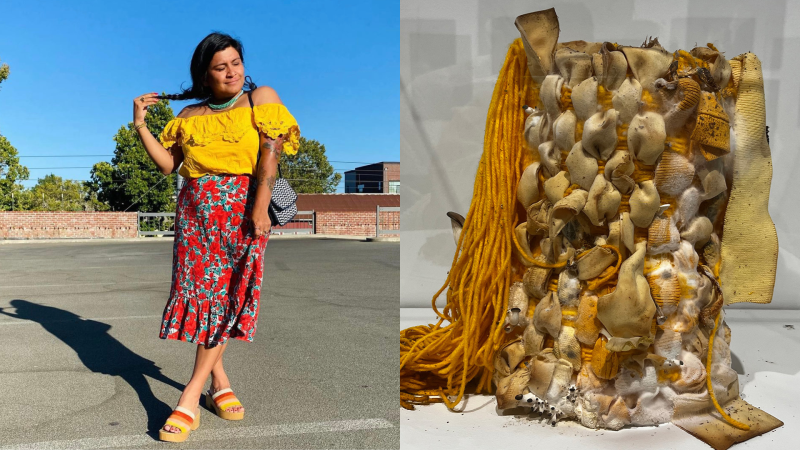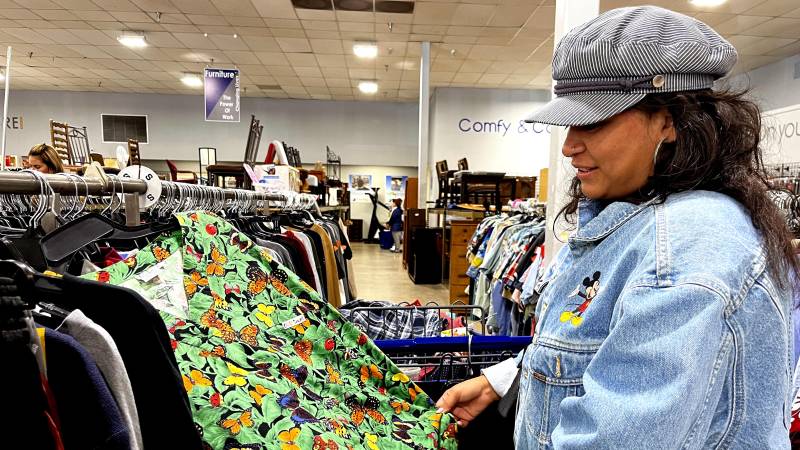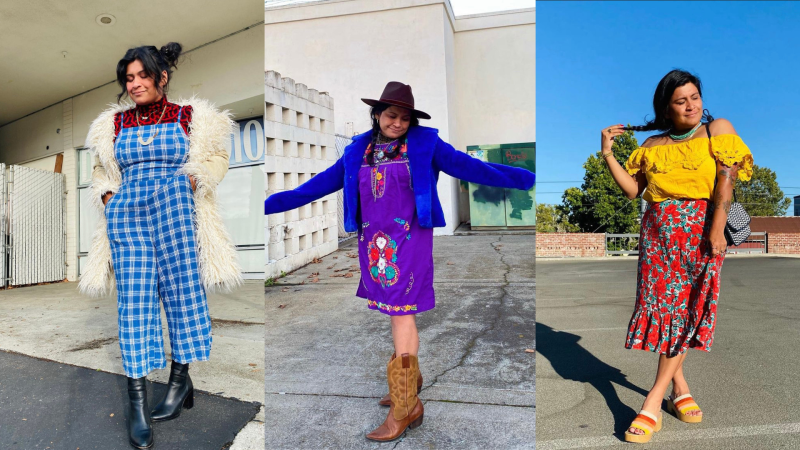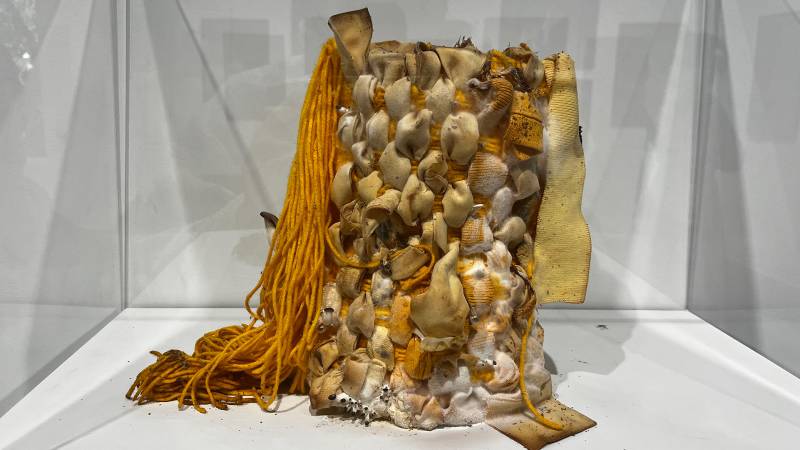On a sunny November day, I met up with Jessica Gonzalez in Gilroy. When we first met, her eclectic style caught my eye. I figured she must spend a lot of her money on clothes, but she surprised me when she said most of it is thrifted.
Thrifting and Bio-Art: Two Different Approaches to the Fast-Fashion Problem

Despite being a full-time special education teacher, Gonzalez has a side hustle as a thrift store stylist: People pay her to help them shop.
Gonzalez has a long history with a particular Goodwill. Her mom shopped here when Gonzalez was growing up, and Gonzalez has memories of riding her bike with her siblings in the parking lot while her mom dug for treasure inside. Gonzalez says no one could beat her mom at finding a special piece of flair to liven up any outfit.

“She would just maneuver it to make it cute because you know, of course, I was already a fashionista at that age,” Gonzalez said.
For her family, shopping at thrift stores was a good way to save money. And her mother taught her to always see the potential in every outfit.
“She would buy me little trinkets and then she’d glue them or sew them onto a denim jacket that [we all] wore,” Gonzalez said.
Now that she’s an adult, friends sometimes hire her to find them the perfect outfit at the thrift store.
“That’s the most fun part for me,” she said. “Being able to bring someone who doesn’t like shopping for themselves, and them being like, I want you to find me an outfit that makes me feel good about myself. Then I’m like, ‘Sick!’”
Gonzalez often turns to social media to find inspiration, but she’s noticed that skinny white women dominate the industry. She decided to make an Instagram account to celebrate less mainstream types of beauty, and showcases innovative fashion from plus-size women of color.
“The most important thing, and I think you could see this in my own style, is bringing in my Hispanic culture,” she said.

As her social media network grew, Gonzalez was exposed to people advocating for many different causes within the fashion world. One of the most vocal segments educates the public about the environmental impact of “fast fashion,” a term used to describe cheaply manufactured clothes intended to be thrown away after a season.
“It’s so wasteful for people to buy clothes, wear them for one season, give them away and then we never see them again,” Gonzalez said.
She learned other surprising tidbits about the global fashion industry, like the fact that it accounts for close to 8% of greenhouse gas emissions. And people are buying new clothes at record rates, with the average American throwing away nearly 80 pounds of clothing a year.
Gonzalez was also surprised to learn that nearly 60% of clothes are made with plastic, which can take hundreds of years to decompose. All this has made her even more committed to thrift shopping.
“I feel like there is this whole new generation of people who are falling in love with secondhand and falling in love with thrifting like I did when I was a kid,” she said.
Experimenting with bio-art
After learning about some of the pitfalls of the fashion industry from Gonzalez, I was curious about other approaches to solving the problem. That’s when I stumbled upon the work of Chilean artist Minga Opazo. She’s a sculptor who works primarily with textiles.
In a recent exhibition at the San Luis Obispo Museum of Art, Opazo showed pieces in which she used mycelium — a type of mushroom. The idea is that the mycelium will help decompose the cloth more quickly. She calls it bio-art and is partnering with researchers from UC Riverside to determine whether a similar strategy could be used in landfills.

Opazo wants her art to make people stop and think about some of the social and environmental consequences of fashion.
“I know how to make a garment, I know how much time it takes and I know how much resources [it takes] to make it,” Opazo said. “And you just throw it away.”
It’s personal for her: She says a lot of discarded clothing ends up in Chilean landfills.
“In the north of Chile, we have these dumps of massive amounts of textiles in the desert and they usually bury them or burn them,” she said.
Minga hopes her mycelium sculptures can offer a hopeful vision of the future to visitors — there are things we can do to stop the environmental destruction, including buying less clothing.
“Let’s collaborate with mycelium,” she said. “Let’s collaborate with other composters. Let’s see how we can grow this [on] a bigger scale.”
